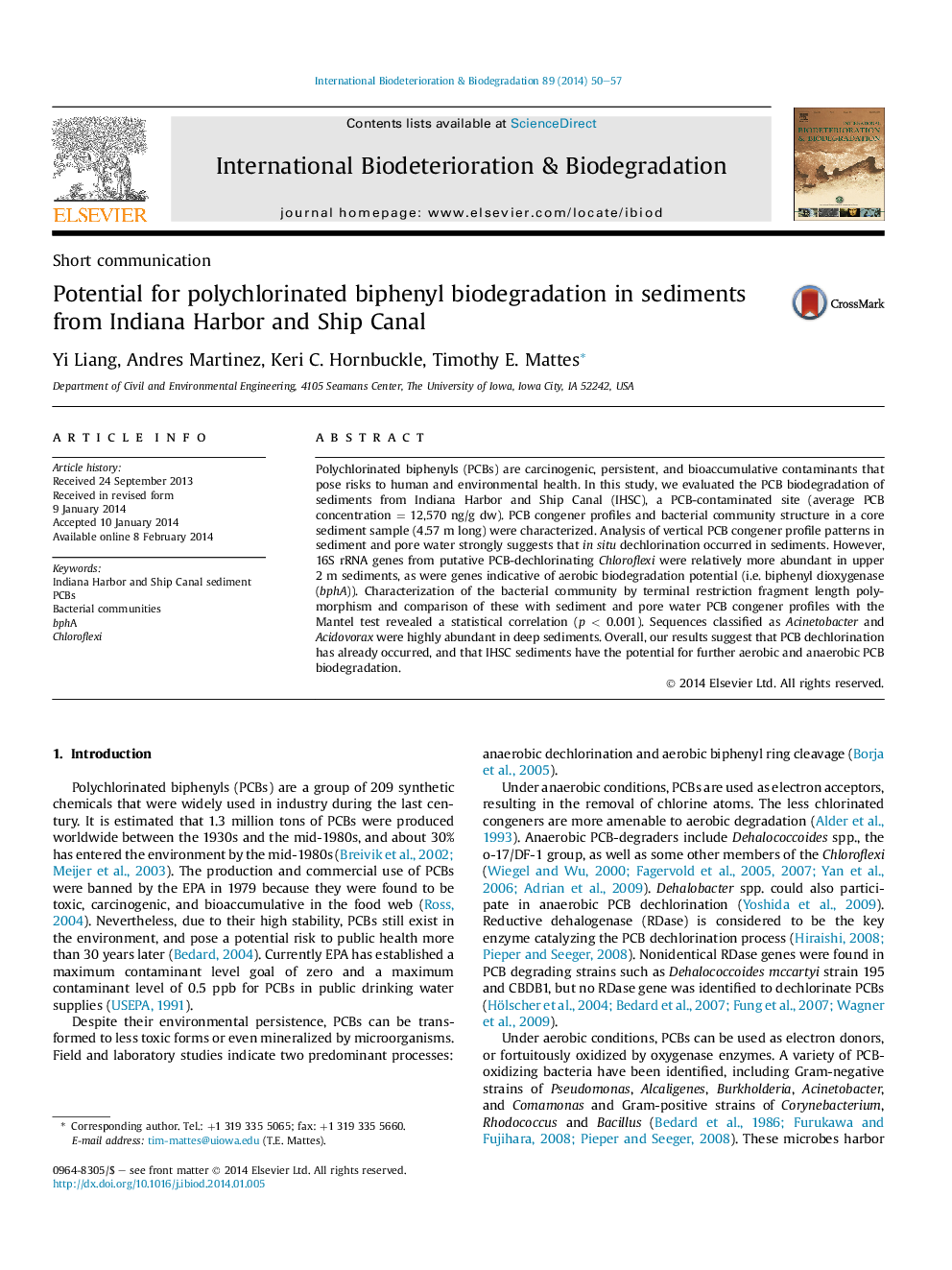| Article ID | Journal | Published Year | Pages | File Type |
|---|---|---|---|---|
| 4364837 | International Biodeterioration & Biodegradation | 2014 | 8 Pages |
•PCB congener analysis suggested in situ PCB dechlorination occurred in sediments.•Putative dechlorinating Chloroflexi abundance was elevated in shallow sediments.•Biphenyl dioxygenase gene abundance was also elevated in shallow sediments.•Acinetobacter and Acidovorax spp. were highly abundant in deep sediments.•Acidovorax sp. abundance was correlated with molar dechlorination product ratios.
Polychlorinated biphenyls (PCBs) are carcinogenic, persistent, and bioaccumulative contaminants that pose risks to human and environmental health. In this study, we evaluated the PCB biodegradation of sediments from Indiana Harbor and Ship Canal (IHSC), a PCB-contaminated site (average PCB concentration = 12,570 ng/g dw). PCB congener profiles and bacterial community structure in a core sediment sample (4.57 m long) were characterized. Analysis of vertical PCB congener profile patterns in sediment and pore water strongly suggests that in situ dechlorination occurred in sediments. However, 16S rRNA genes from putative PCB-dechlorinating Chloroflexi were relatively more abundant in upper 2 m sediments, as were genes indicative of aerobic biodegradation potential (i.e. biphenyl dioxygenase (bphA)). Characterization of the bacterial community by terminal restriction fragment length polymorphism and comparison of these with sediment and pore water PCB congener profiles with the Mantel test revealed a statistical correlation (p < 0.001). Sequences classified as Acinetobacter and Acidovorax were highly abundant in deep sediments. Overall, our results suggest that PCB dechlorination has already occurred, and that IHSC sediments have the potential for further aerobic and anaerobic PCB biodegradation.
